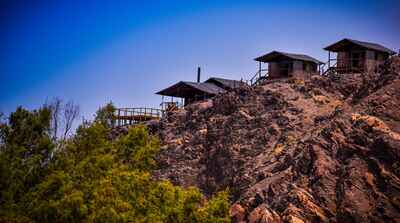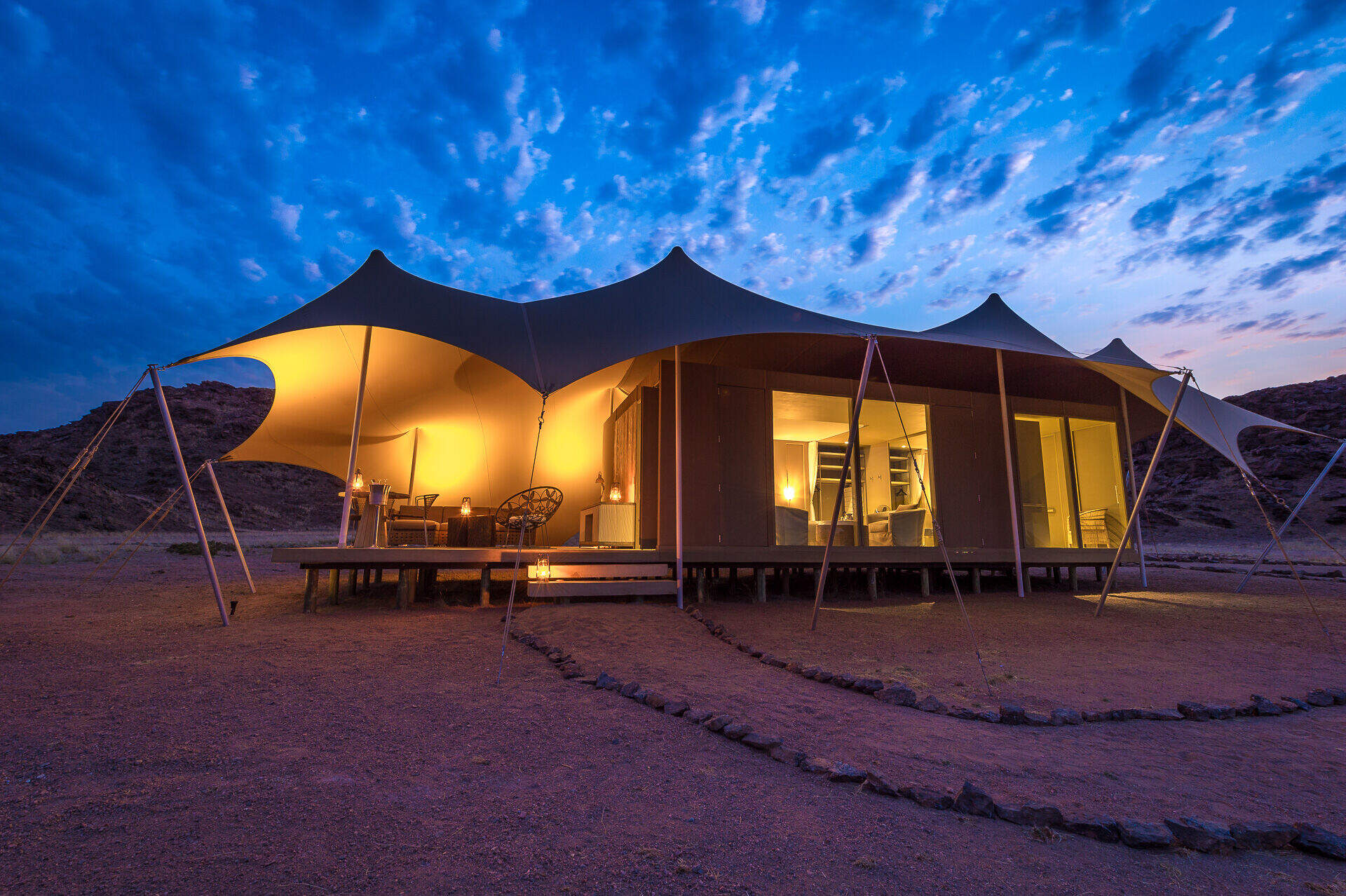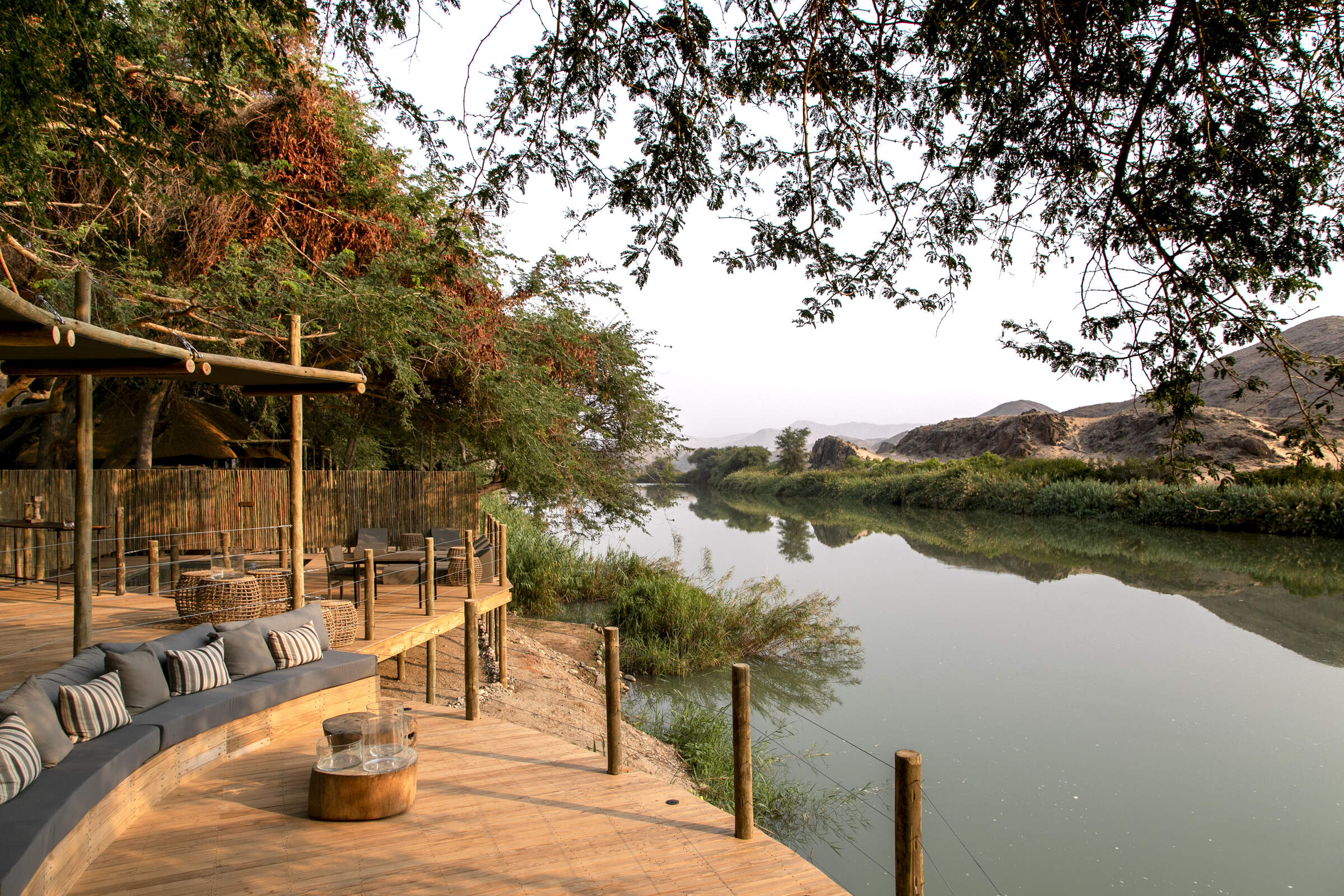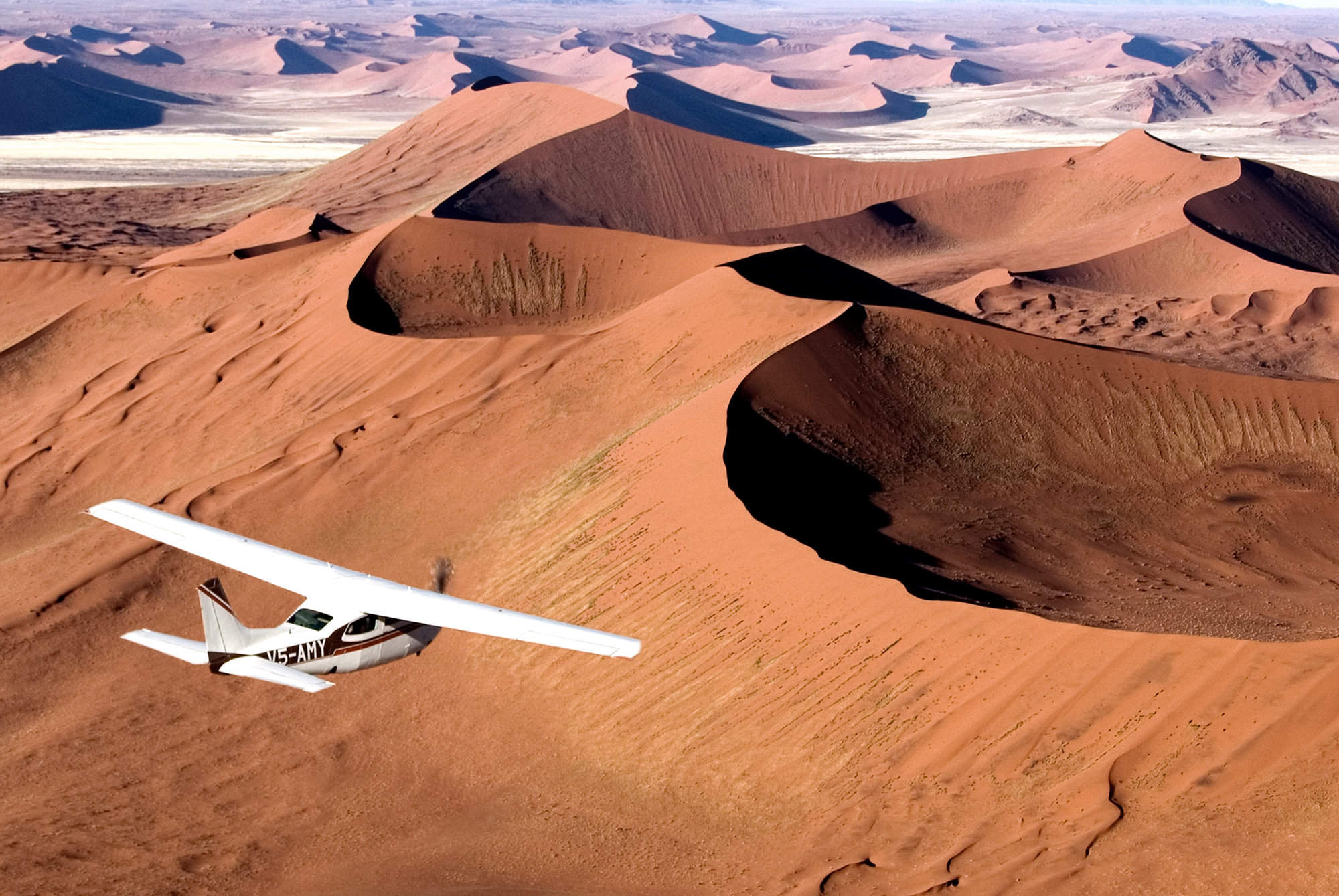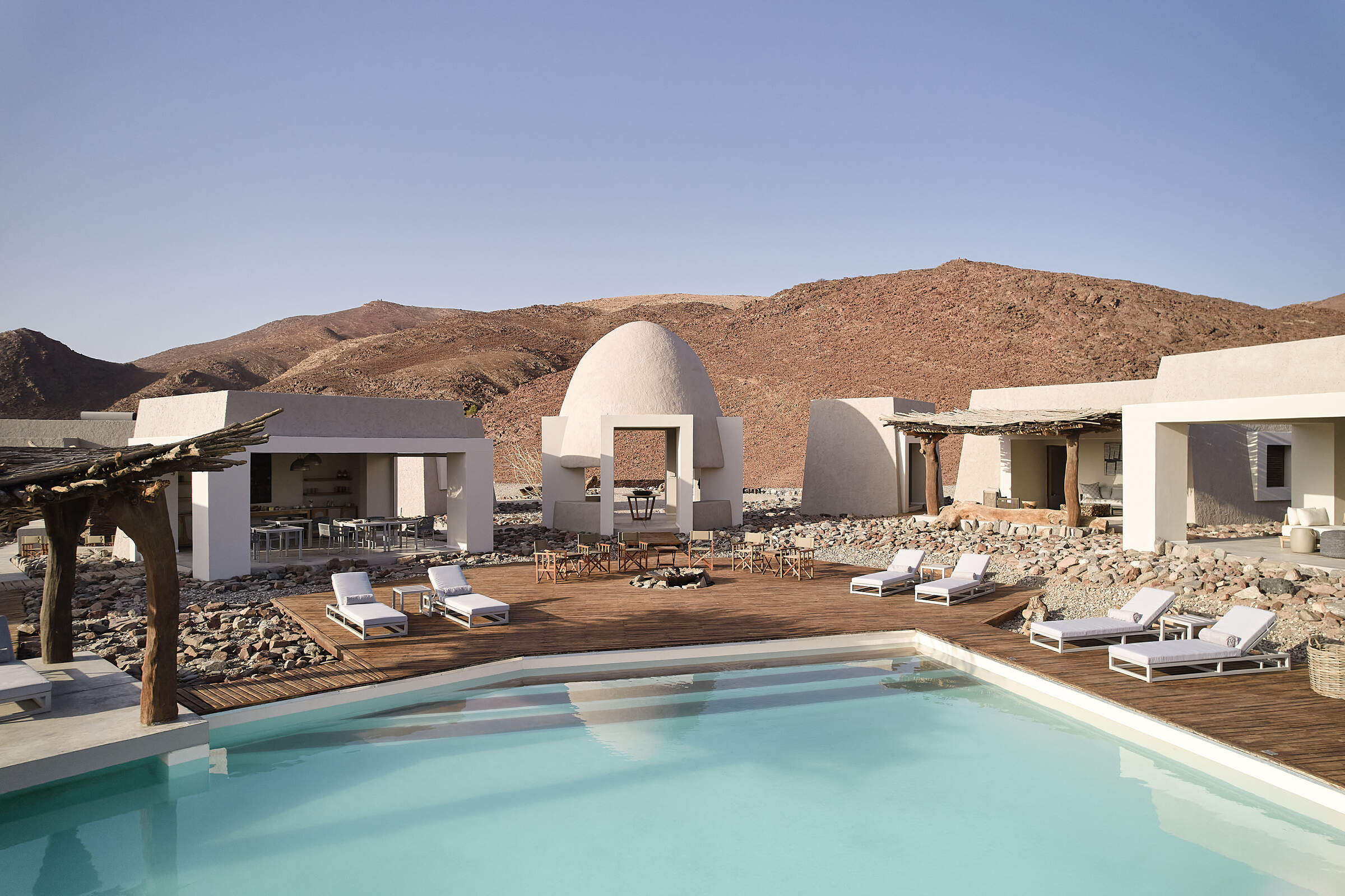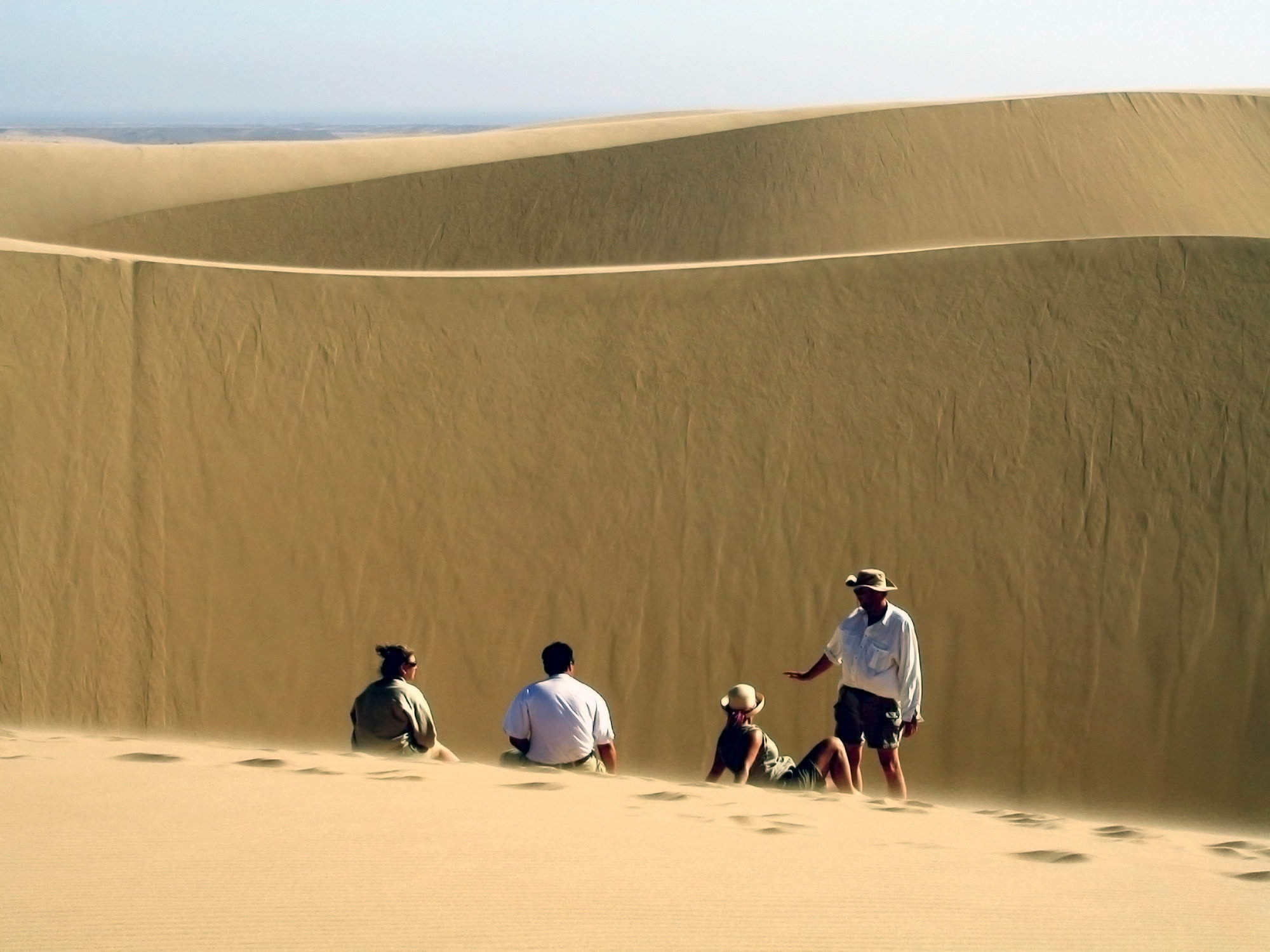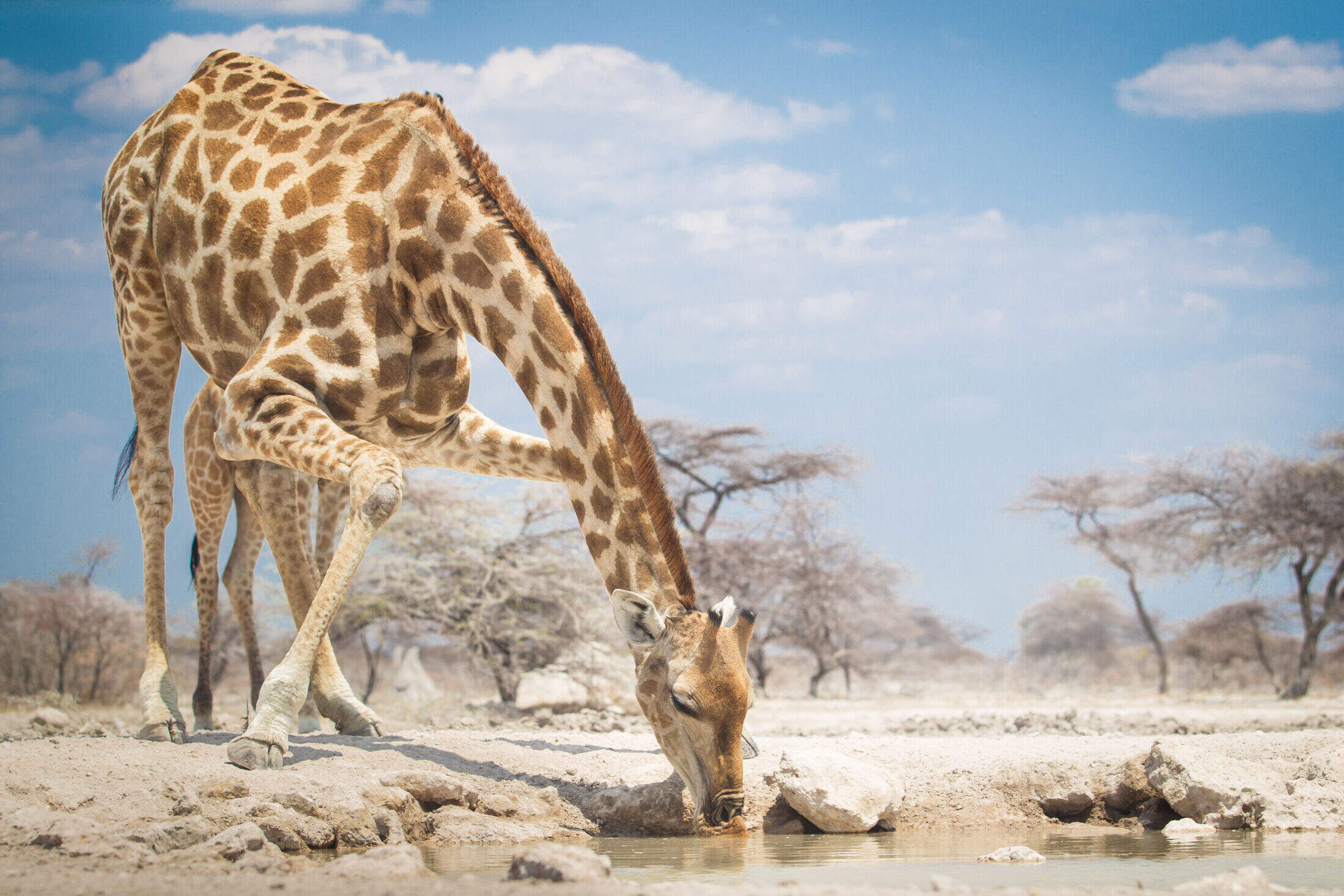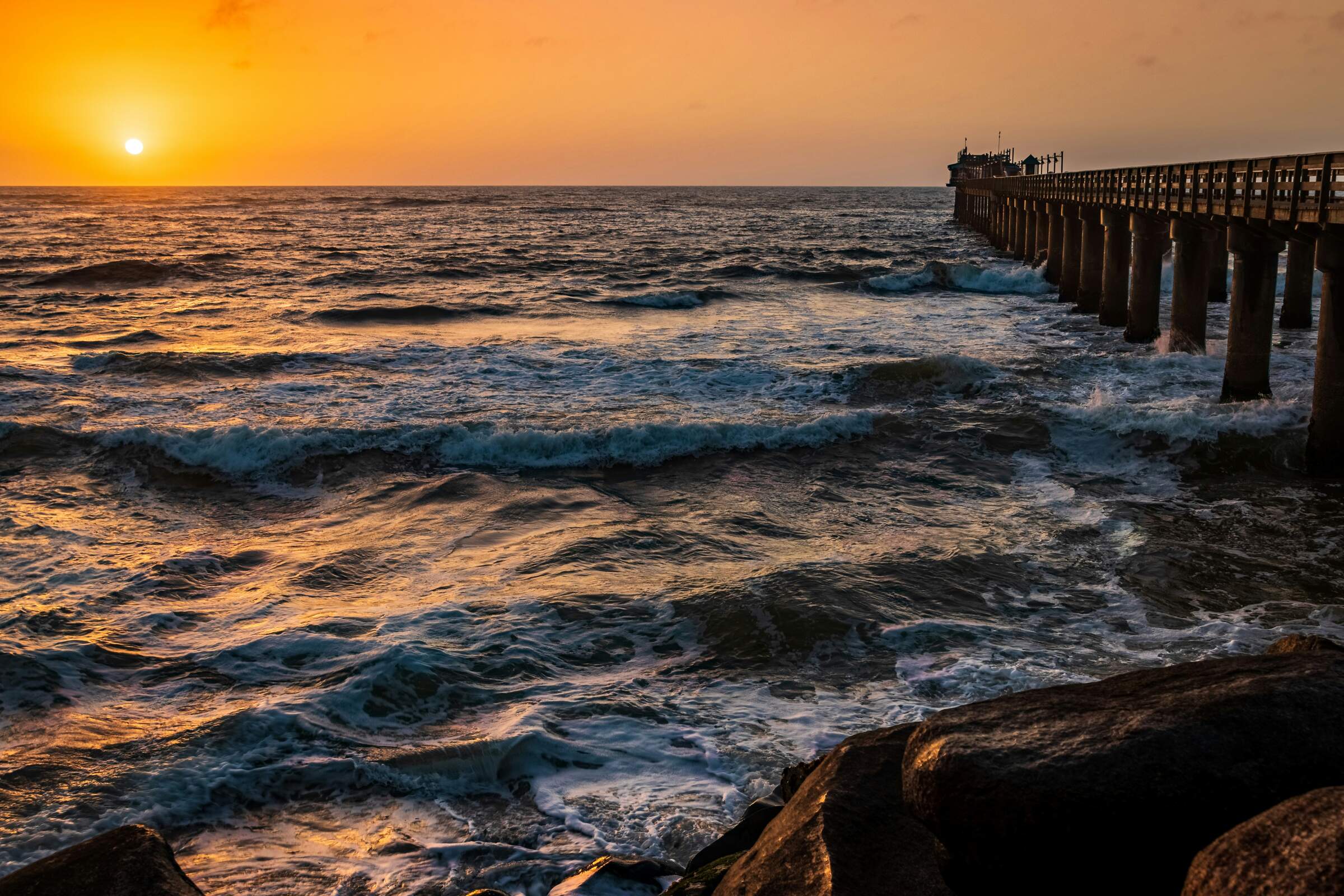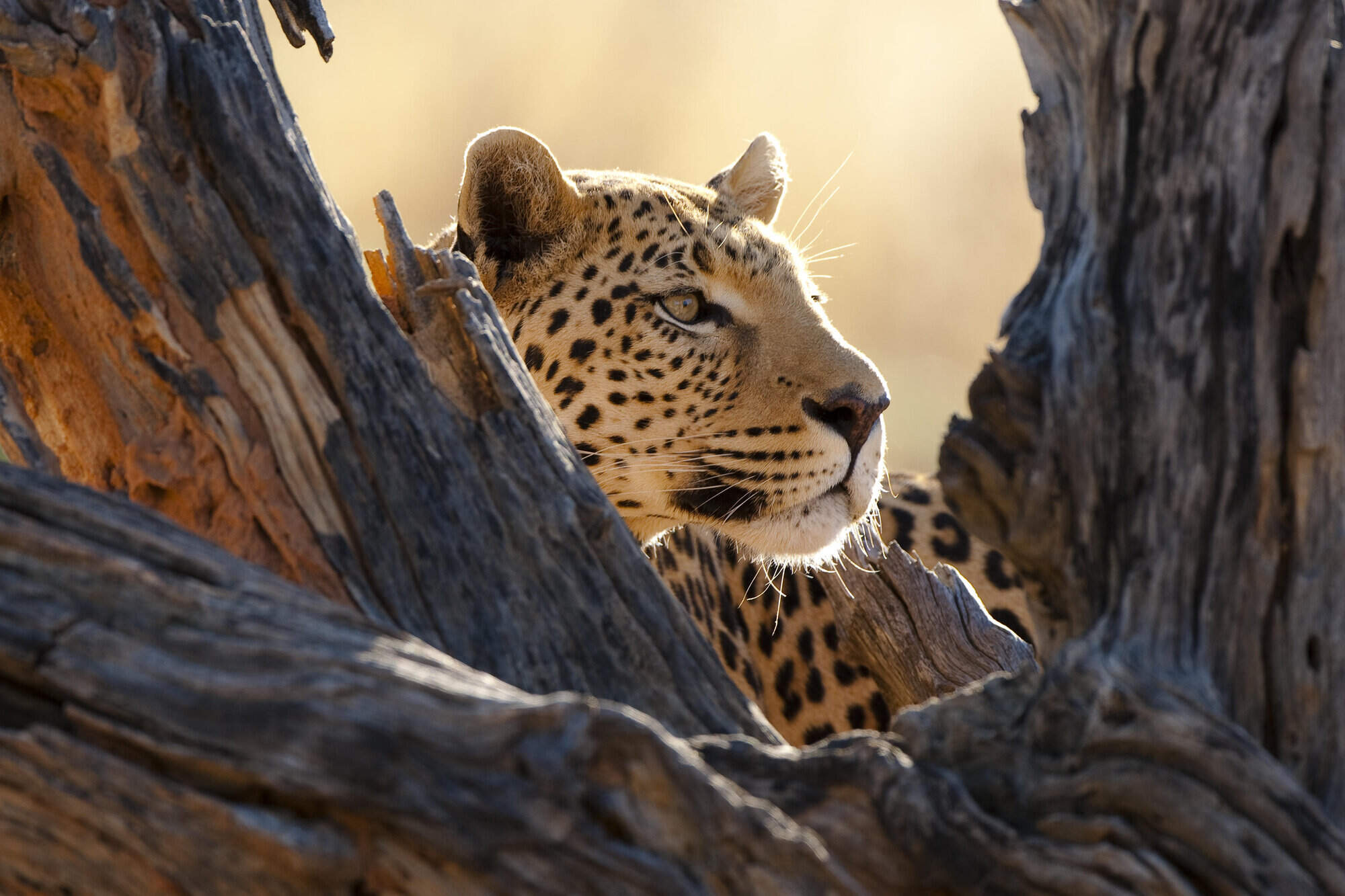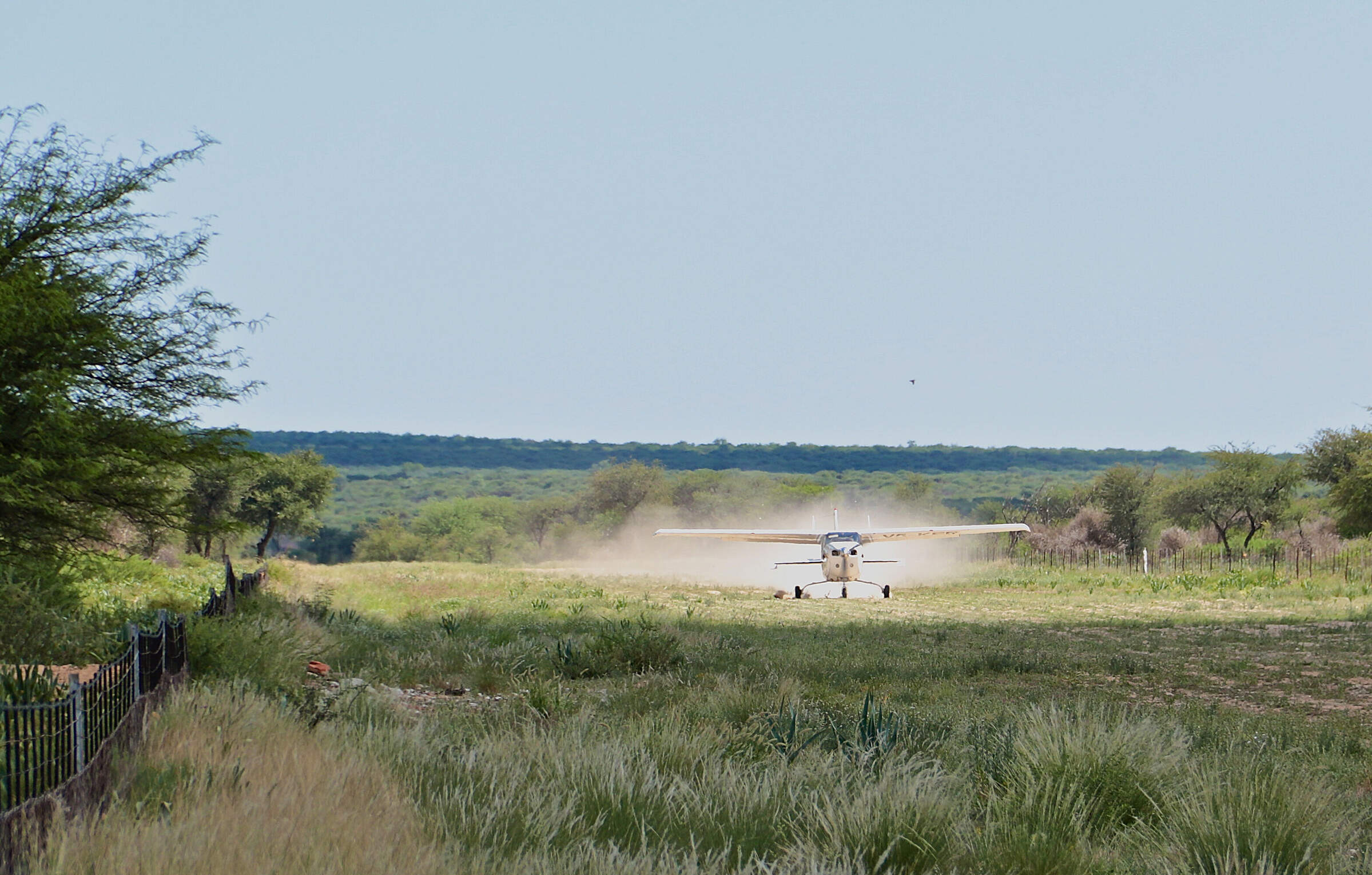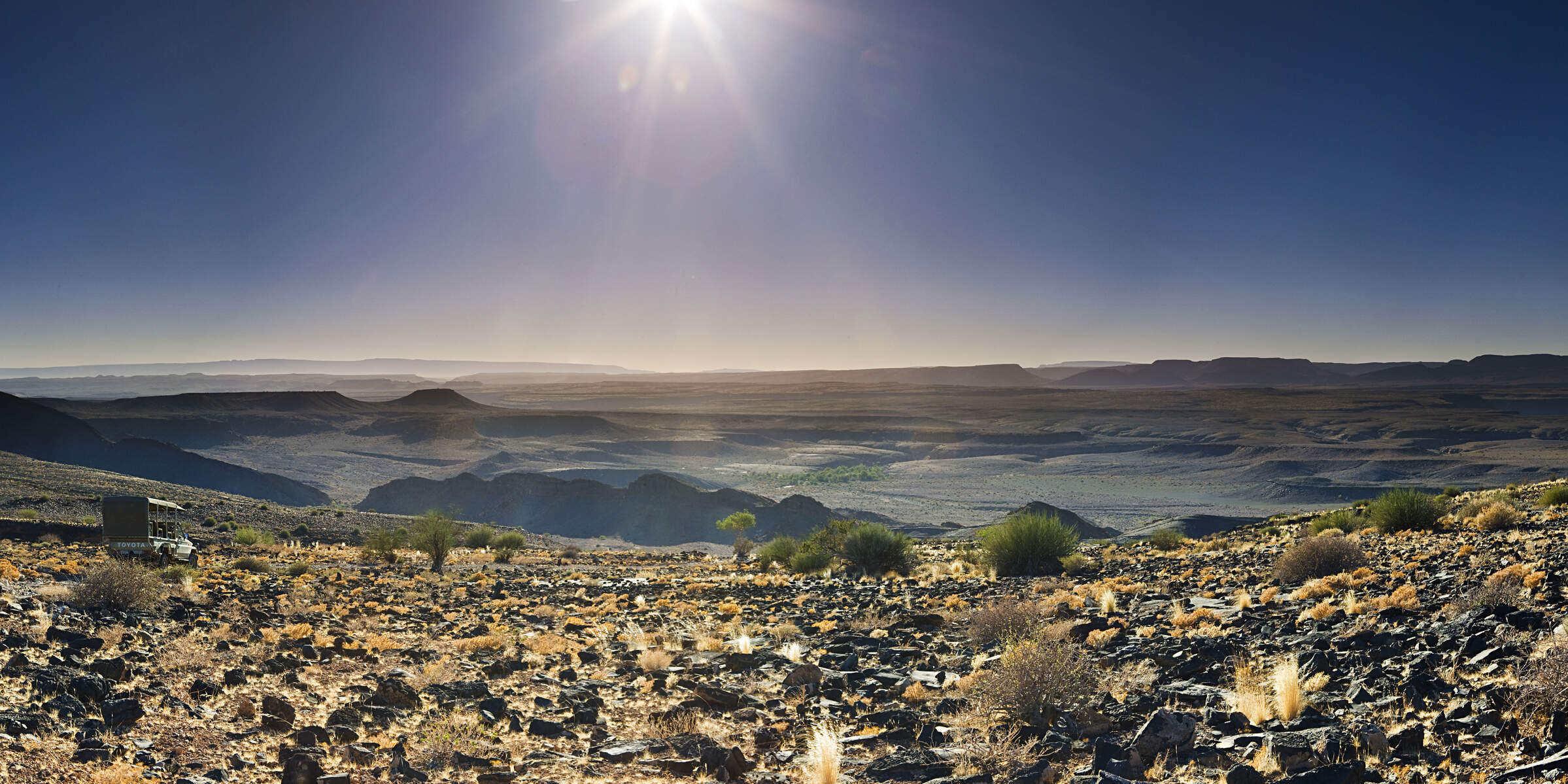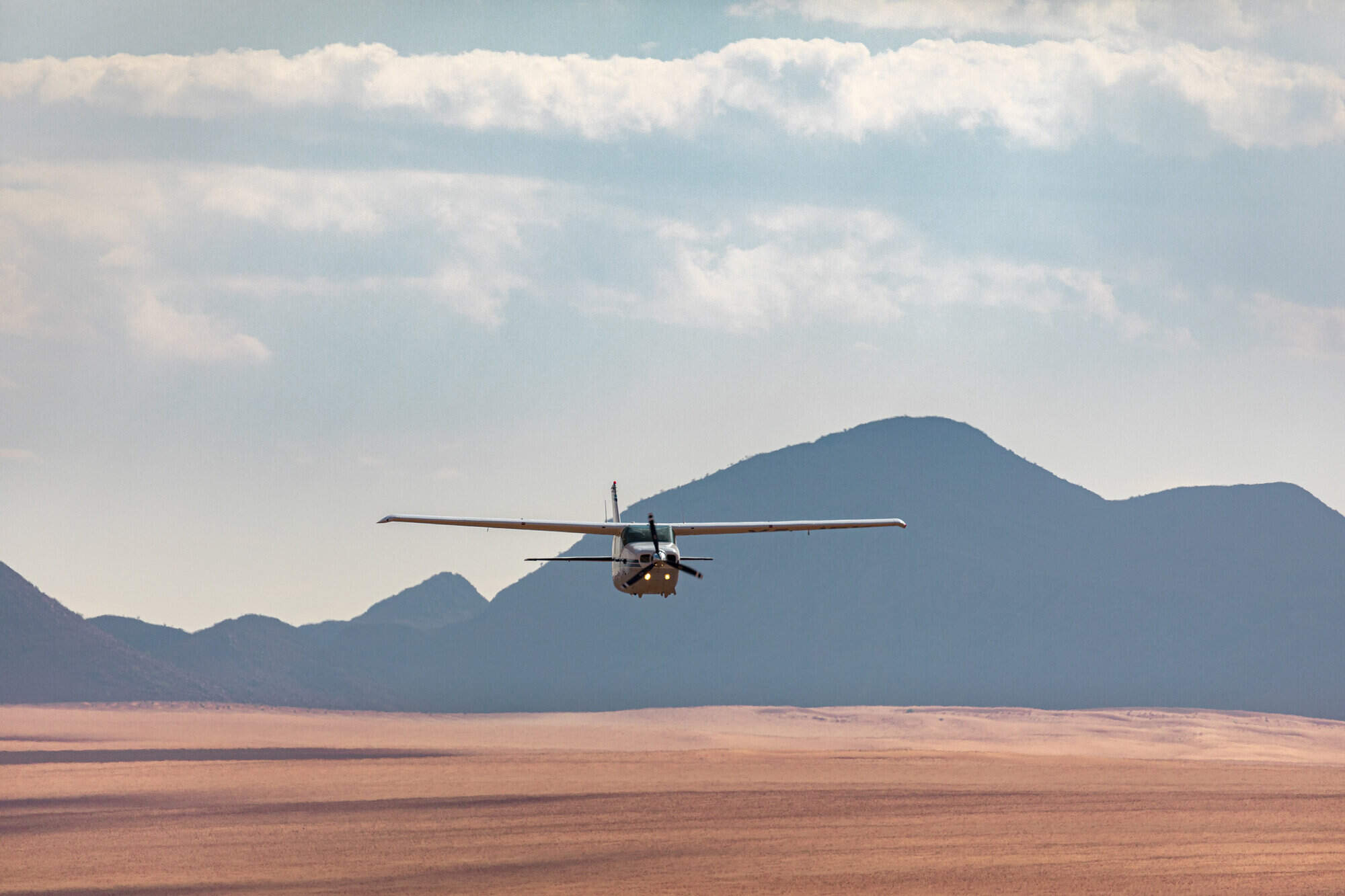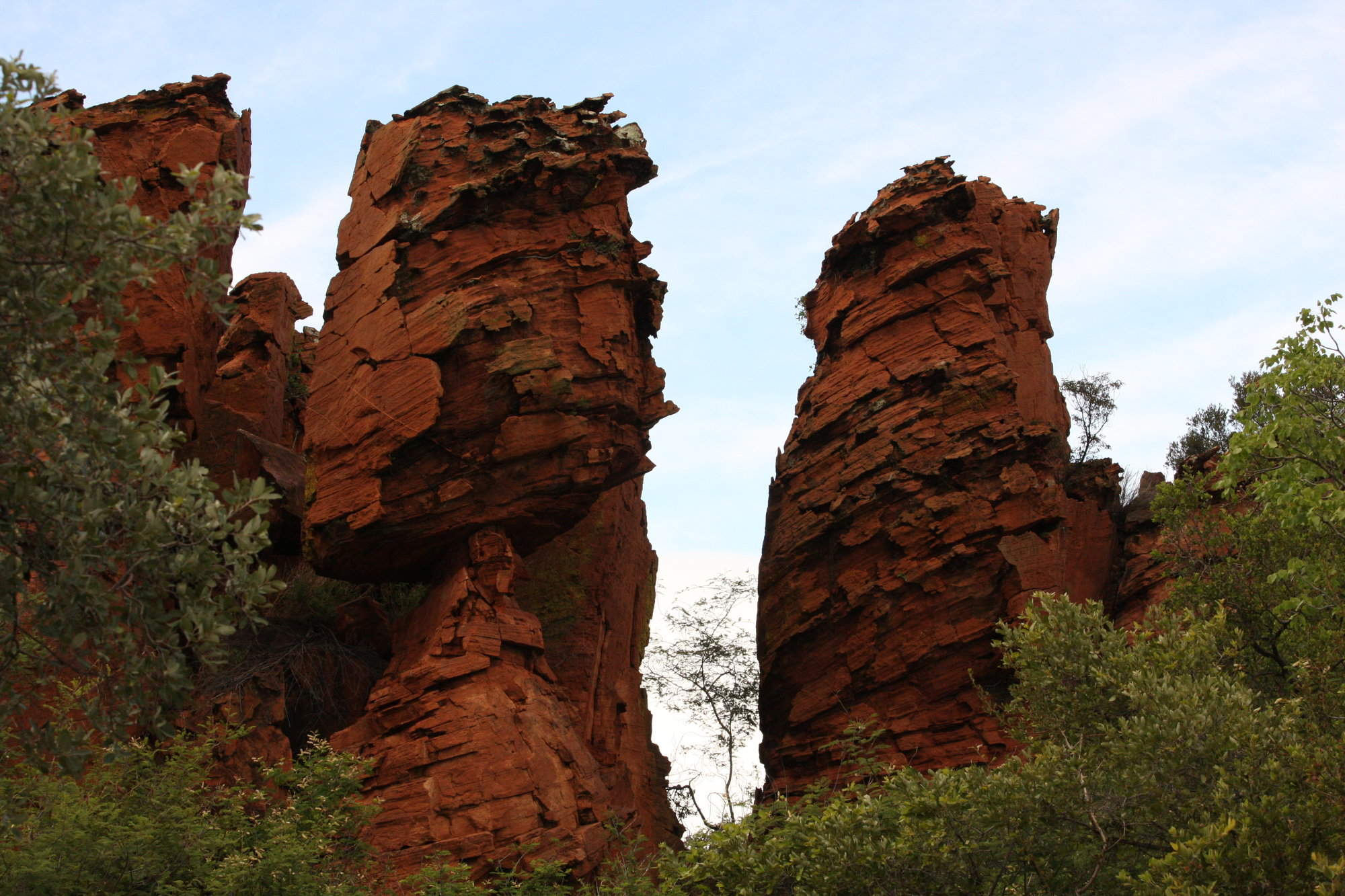Leylandsdrift Camp: Our full report
Bordering Namibia’s Skeleton Coast National Park, Leylandsdrift Camp is almost hidden within the remote Hoarusib Valley.
It’s a simple yet comfortable camp, close to a Himba settlement and a good location for tracking desert-adapted elephants. It may be visited only with the family-run Skeleton Coast Safaris, usually on the second day of one of their 4-day trips.Leylandsdrift is the central of three camps used by the Schoeman family to explore the Skeleton Coast, the others being Kuidas Camp to the south and Kunene River Camp to the north.
Visitors arrive here from Kuidas Camp, flying north with their guide along the coast and stopping to explore the beaches and to discover the thrill of the roaring dunes, before reaching Leylandsdrift in time for sundowner drinks around a warming fire.
The camp was built in 2011 to replace the Schoemans’ original camp in this area. It lies on the banks of the ephemeral Hoarusib River in the heart of the Kunene region, or Kaokoland, about 40km west of the village of Purros.
It’s a location that offers great views over the river valley, which is frequented by a variety of species including desert-adapted elephant and a small lion population. A few black rhino have also been trans-located here, and while sightings are rare, tracks can sometimes be spotted in the river clay.
Slightly more spacious than the other two Schoeman camps, Leylandsdrift is still small and relatively simple in design. Each of the eight walk-in tents is raised up on a wooden deck beneath a reed-and-pole roof, and is partially enclosed by reeds. Steps lead up to a small veranda which enjoys dramatic views down the valley. Through the zipped front you’ll find proper twin beds, which can be linked to form a double, made up with white bedding and towels, and enlivened by bright cushions. Bedside tables are set with water, glasses and tissues, with lamps on each of the headboards.
The reed enclosure encompasses a flush toilet, an en-suite bucket shower with hot water supplied on request, and a stone table with a bowl placed on it for washing your face and hands. Both shampoo/shower gel and insect repellent are provided.
Meals are served in an attractive central area, also of reed-and-pole construction, with wooden and directors’ chairs, and unbroken views down the valley and across the hills. In the evening, drinks are enjoyed around a fire.
After breakfast, visitors usually set out by 4WD to explore the beautiful Hoarusib River valley, whose shade and water is crucial to the survival of much of the local wildlife. You will learn from expert guides about the local flora and fauna, and may well observe the desert-adapted elephant that roam these dry riverbeds in search of food and water. You’ll also explore some of the more unusual features of the area, including towering clay “castles”.
On our visit we were lucky enough to see several elephants, as well as giraffes, and a troupe of chacma baboons foraging and playing by a spring. We also spotted a variety of birds including the black-breasted snake eagle, scimitar-billed wood hoopoe, western red-footed falcon and the endemic Monteiro's hornbill.
The Kunene Region is also home to the nomadic Himba community. During a visit to one of their settlements you’ll be able to observe and learn about their traditions, enhanced by explanations from your guide, who has an in-depth understanding of their culture.
Leaving Leylandsdrift mid-morning, you will head north by light aircraft along the coast to the Kunene River. A picnic lunch followed by a spectacular drive through the Hartmann Valley brings you to Kunene River Camp.
Our view
Leylandsdrift is usually the second night’s camp on a Skeleton Coast Safari. It’s a simple yet comfortable set up, in a beautiful location, but more important are the guiding and the experience. The hallmark of these safaris is the near-unrivalled knowledge and expertise of the Schoeman guides, who have been immersed in this region their whole lives.
Geographics
- Location
- Skeleton Coast & Kaokoland, Namibia
- Ideal length of stay
- One night is usually spent here as part of an all-inclusive Skeleton Coast Safari.
- Directions
- Can be visited only as part of a fly-in safari
- Accessible by
- Fly-and-Transfer
Food & drink
- Usual board basis
- Full Board & Activities
- Food quality
- The standard of food served on the Skeleton Coast Safari, when we visited was very good.
Breakfast is a buffet with a choice of cereal, yoghurts and maize porridge, followed by freshly baked bread with jam, cheese, meats etc.
The buffet lunch included a range of cold dishes with a notably good potato salad.
Our dinner was a great selection of barbecued food accompanied by potato salad and green salad, and a good wine. - Dining style
- Group Meals
- Dining locations
- Indoor Dining
- Drinks included
- Most drinks, except premium-brand and imported wines and spirits, are included. There is always a good supply of bottled water, with filtered or borehole water also available.
Special interests
- Photography holidays
- Visiting Leylandsdrift Camp on a Skeleton Coast Safari provides superb photography opportunities in Namibia. Aerial views of the varied landscapes can be stunning, while at ground level you may get the opportunity to photograph Himba people in the nearby settlement.and desert-adapted elephants.
- See ideas for Photography holidays in Namibia
- Cultural experiences
- A stay at Leylandsdrift on a Skeleton Coast Safari may include a visit to a Himba settlement. Observing the traditions of these semi-nomadic people creates a unique opportunity to gain a brief insight into this traditional Namibian culture.
- See ideas for Cultural experiences in Namibia
- Wildlife safaris
- The Hoarusib River valley, in which Leylandsdrift Camp is situated, is a great place to track desert-adapted elephants. The riverine vegetation and natural springs act as magnets for these animals, as well as for other desert-dwelling species.
- See ideas for Wildlife safaris in Namibia
Children
- Attitude towards children
- The Schoemans are happy to accept children on their safari.
- Property’s age restrictions
- Children of all ages are welcome on this trip.
- Special activities & services
- None
- Equipment
- None
- Generally recommended for children
- Long days and a fair amount of flying on a Skeleton Coast Safari are not usually ideal for younger children, even if the activities themselves would be interesting. For this reason, we would recommend it only for older children with a genuine interest in the natural world.
- Notes
- The camp is unfenced, and dangerous animals could roam through. Children should be supervised at all times by a parent or guardian.
Communications
- Communications
- There is a satellite phone in case of emergency, but otherwise you can expect to be out of communication at Leylandsdrift,
- TV & radio
- None
- Water supply
- Borehole
- Water supply notes
- Water for toilets and showers is filtered. All tents have an en-suite flush toilet and a bucket shower, with hot water provided on request.
Health & safety
- Malarial protection recommended
- Yes
- Medical care
- There are doctors in the nearest towns, usually best accessed by air. In an emergency, medical evacuation can be arranged.
- Dangerous animals
- Moderate Risk
- Security measures
- Your guide and camp staff stay on site at Leylandsdrift.
- Fire safety
Activities
4WD Safari
Birdwatching
Private activities
Extras
- Disabled access
- On Request
- Laundry facilities
- A stay at Leylandsdrift is relatively short, but laundry can be done if you require it urgently.
- Accepted payment on location
- You may need cash to tip camp staff and to buy souvenirs at a Himba settlement.
Other lodges in Skeleton Coast & Kaokoland
Alternative places to stay in this same area.
